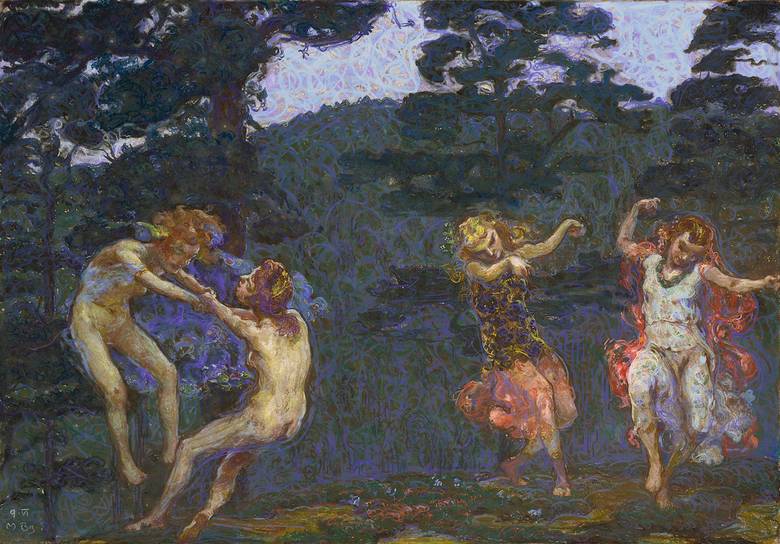Elves inhabit two possible realms in Norse myth: Alfheim (or Álfheimr) and Svartalfheim. “Álfheim” means “Land of the Elves,” so it is undoubtedly an Elf realm. However, “Svartalfheim,” or “Land of the Black Elves,” is often described as “The Land of the Dwarves.”
To confuse matters further, the dwarves also have a land called “Nidavellir.”
What Is the Norse word For Elf?
Álfr is the Old Norse word for an elf. Its plural is álfar.
The Origin of the Elves
No origin story of the Elves exists in Norse mythology.
However, Alaric Hall claims that one Old Norse poem uses the word “elves” to describe the Vanir in his 2007 book Elves in Anglo-Saxon England.
Where Do Elves Live in the Nine Realms?
Elves live in Álfheim.
There is some confusion about the positions and populations of some realms within Norse cosmology. The placement of Vanaheim, for example, can vary depending on which map you use. However, the most common positions of the nine worlds are as follows:
Asgard, home of the Æsir led by Odin and Thor, always lies in the highest and central section of the World Tree or Yggdrasil. Vanaheim and Álfheim usually flank it. Directly below Asgard lies Midgard. The tree trunk usually connects the two places, so the Bifrost or rainbow bridge can join them.
Further down, we have Jotunheim (land of the ice giants) and Muspelheim (land of fire giants and the god Surtr). Niflheim (land of snow and ice) is sometimes combined with or separate from Hel (or Helheim – the land of the dead), although some maps show one or the other!
Nidavellir (land of dwarves) also requires a little explanation. Nidavellir is often called Svartalfheim (home of the black elves or Svartálfar). However, some maps separate Nidavellir from Svartalfheim and exclude Niflheim or Hel completely.
Make sure to also check the following articles:
What Is Álfheim Like?
Many scholars, including John Lindow, have written the realm of Álfheim straddled the border between Norway and Sweden, lying between the river Glom and the river Gota.
There is no attested description of the region of Álfheim in the Prose or Poetic Eddas or any other translation of Viking myth. However, the Gylfaginning in Sturluson’s Prose Edda describes the elves as “more beautiful than the sun.”
This quote and the fact that the fertility god Freyr became the ruler of Álfheim suggests it is a pleasant and productive land.
Who is the God of Elves in Norse Mythology?
The Æsir made the Vanir god Freyr ruler of the elf kingdom, Álfheim, shortly after he was born.
Grímnismál
Grímnismál mentions that the gods gave Álfheim to Freyr:
Alfheim the gods to Frey
Grimnismal – Germanic Mythology
gave in days of yore
for a tooth gift.
A “tooth gift” is given to a child when his first tooth appears.
Dark Elves Vs. Light Elves in Norse Mythology
Snorri Sturluson, the Icelandic politician, historian, and poet, interpreted the ancient Norse tales and poems as Christian writing for the Christian public. The paganism of the source material may well have presented a challenge or been uncomfortable for Sturluson, and he could have altered it to suit his audience.
In the Prose Edda, Sturluson’s uses of “dvergar” (dwarves), svartálfar (black elves), “ljósálfar” (light elves), and dökkálfar (dark elves) are confusing, so it is difficult to say if they are interchangeable.
Svartalfheim means “realm of the black elves.” Using common sense and taking the name of “Svartalfheim” at face value, i.e., land of the black elves, we might deduce that elves populated this region and dwarves lived in Nidavellir.
Sturluson and his perception of Svartalfheim
However, Sturluson insists that dwarves inhabit Svartalfaheim. Gylfaginning says dwarves made Gleipnir, the manacles that restrained Fafnir, and Andvari, the dwarf who lives in the world of the black elves in Skáldskaparmál (second part of the Prose Edda), according to Faulkes’ translation of 1995.
Stanza 17 of the Gylfaginning in Sturluson’s Prose Edda describes the light elves and the dark elves thus:
That which is called Álfheim is one,
Alfheimr – Wikipedia
where dwell the peoples called Ljósálfar;
but the Dökkálfar dwell down in the earth,
and they are unlike in appearance,
but by far more unlike in nature. (“Ljusalfheim”)
The Light Elves are fairer to look upon than the sun,
but the Dark Elves are blacker than pitch.
Ljósálfar are light elves; Dökkálfar are dark elves.
J. R. R. Tolkien only used light elves in The Hobbit and The Lord of the Rings trilogy. They were supernatural beings who had extraordinary athletic ability and longevity.
Are Norse Elves Evil?
Anne Elisabeth Holtsmark (1896-1974), the first female professor of Nordic philology at the University of Oslo, states that:
“Not all elves are good, and from Icelandic and Latin synonyms, it has acquired the sense of the dichotomy of ‘good and evil spirits,’” as in Sturluson referring to them as Ljósálfar and Dökkálfar: light and dark elves.
James Steven Stallybrass translated the thoughts of Jacob Ludwig Karl Grimm, the German folklorist, thus:
“Some have seen, in this antithesis of light and black elves, the same Dualism that other mythologies have set up between spirits good and bad, friendly and hostile, heavenly and hellish, between angels of light and darkness. But ought we not rather assume three kinds of Norse genii: liosâlfar, dockâlfar, svartâlfar?”
What Magic do Norse Elves Have?
The Kormáks saga, an Icelander saga written during the early 13th century, suggests that elves can cure humans, especially when those humans make a sacrifice (or Álfablót).
The Þiðreks saga, an Old Norse chivalric saga, and the Hrólfs saga kraka, the fifth-century adventures of King Hrólfr Kraki, say elves can mate with humans to produce human-looking children, but they have magical elven powers.

